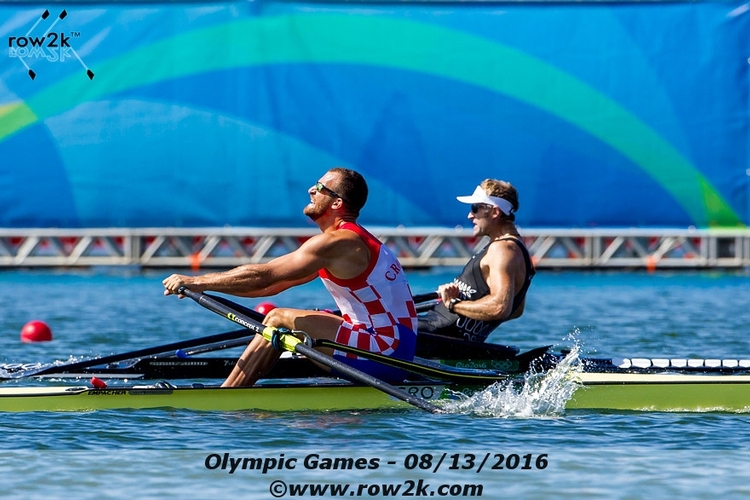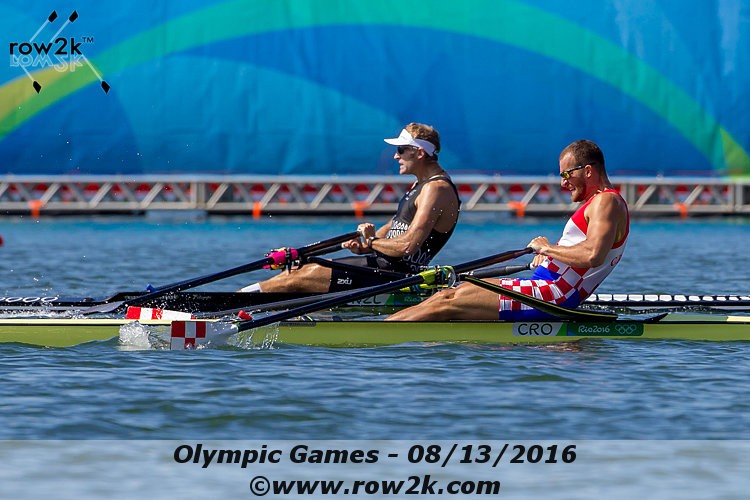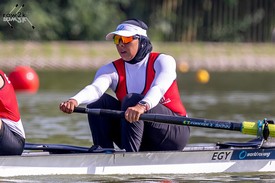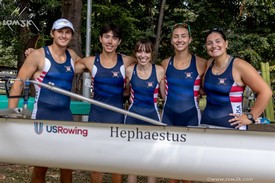Mahe Drysdale Talks Billy Webb Olympic Rematch and Race Timing
The Drysdale-Martin Billy Webb Centennial Challenge match race runs Sunday in New Zealand

Just after crossing the finish line in the Rio Olympic singles final, New Zealand's Mahe Drysdale and Croatia's Damir Martin sat in their boats exchanging looks between each other and the Jumbotron above the course, waiting for a definitive conclusion to their race.
The two scullers reached the line at the same time - 6:41.34, and neither knew who had won until a photo examined by race officials determined that half of Drysdale's bow ball crossed ahead of Martin's. Drysdale was declared the winner and was awarded his second consecutive Olympic gold medal.
"Yeah, it was nerve-wracking," Drysdale said right after the race. "You know, Damir turned to me. He said, 'What was it?' I said, 'I have no idea.'"
(Watch the race video here.)
In the end, the two scullers were awarded the exact same time, but the finish line system revealed that Drysdale had won by 1/5000th of a second (see the photo here; note that the photo significantly elongates objects in the image).
Not only did it create one of the greatest races in Olympic history, but the result raised questions about the fairness of calling a race that close on a rowing course. Floating starts and angled finish lines all make absolute timing a challenge. Here is one story that raised the issue published after the race.
Since that day, Drysdale has been more than a little magnanimous about the finish, praising Martin and saying he would have been satisfied with a tie.
In a show of ultimate sportsmanship, Drysdale used the December running of the Billy Webb Centennial Challenge - a specific New Zealand event run over a 5k course with a buoy turn - as a opportunity to offer Martin another chance to meet him in a head-to-head race, scheduled for this Sunday on the Whanganui River.
The Challenge is an event begun over a century ago to celebrate New Zealand sculler Billy Webb winning a world sculling championship on the Whanganui in 1908. For the 100th anniversary, 2008 Olympic men's single champion Olaf Tufte was invited to the race, where Tufte defeated Drysdale in that event in front of 25,000 spectators. Read the race report here.
"The Billy Webb challenge has been around since 2008," Drysdale told row2k this week. "It is based on the old World Sculling championship races that Billy Webb was a World Champion in, and was challenged and raced on the Whanganui river in 1908," Drysdale said. "To celebrate this and the 100-year anniversary we invited Olaf Tufte to come to New Zealand and race. From there the event has grown and evolved.
"Because of this race I wanted to invite Damir," Drysdale said. "The old concept was someone would challenge the champion at the time and generally you would race on the champion's own water, so this is a slight change; but after such a spectacular finish, Damir was the perfect choice.
"It was great he has come out here and it's a fantastic opportunity to see the two best scullers in the world, plus a number of quality youngsters race in New Zealand, which we don't see too often here."

After Martin's arrival in New Zealand, he and Drysdale have been training together while promoting the event, and having fun doing it. They held a 500-meter erg challenge on New Zealand television, which Drysdale won by another sliver of a second.
In the moments following their Olympic final, Drysdale said he would have been satisfied with both scullers being awarded gold medals. He held to that this week, and revisited the topic of measuring a race that close with accuracy.

"I would have had no problem with two gold medals," Drysdale said. "I don't think it takes away from the sport or the race. I think the photo finish clearly shows the result I was just ahead as I crossed the line.
"But the question has to asked, what is the margin of error in the course? Is it the millimeters/ centimeters that is in the start and finish lines, and how accurately the boats can be aligned at the start with floating start system?
"This is beyond my knowledge, but results shouldn't be separated by more than the margin of error in the course measuring and aligning. I know in swimming they reckon there is a margin of error in length of pool of up to plus 3 centimeters. So, they don't separate results beyond 0.01 seconds to allow for this."
Drysdale has said in several media interviews since issuing the Billy Webb challenge to Martin that he would hope to avoid another photo finish.
"Certainly for me, I wouldn't be too unhappy to be lengths in front," he said. "But I don't think that's going to happen in this race. It's also an exciting format - we're starting and finishing at the same spot, so will turn around a buoy."
Check back to row2k.com Monday for a race recap.
If you enjoy and rely on row2k, we need your help to be able to keep doing all this. Though row2k sometimes looks like a big, outside-funded operation, it mainly runs on enthusiasm and grit. Help us keep it coming, thank you! Learn more.
Comments | Log in to comment |
There are no Comments yet
| |
- Bont Rowing
- Calm Waters Rowing
- Concept 2
- Craftsbury Sculling
- The Crew Classic
- CrewLAB
- Croker
- Durham Boat Co.
- Empacher
- Faster Masters
- Filippi
- Fluidesign
- h2row.net
- HUDSON
- Live2Row Studios
- Nielsen-Kellerman
- Oak Ridge RA
- Peinert Boat Works
- Pocock Racing Shells
- Race1 USA
- RowKraft
- Rubini Jewelers
- Vespoli USA
- WinTech Racing
- Bont Rowing
- Calm Waters Rowing
- Concept 2
- Craftsbury Sculling
- The Crew Classic
- CrewLAB
- Croker
- Durham Boat Co.
- Empacher
- Faster Masters
- Filippi
- Fluidesign
- h2row.net
- HUDSON
- Live2Row Studios
- Nielsen-Kellerman
- Oak Ridge RA
- Peinert Boat Works
- Pocock Racing Shells
- Race1 USA
- RowKraft
- Rubini Jewelers
- Vespoli USA
- WinTech Racing

















